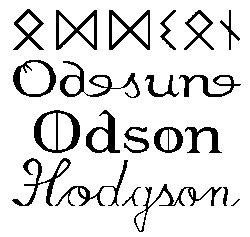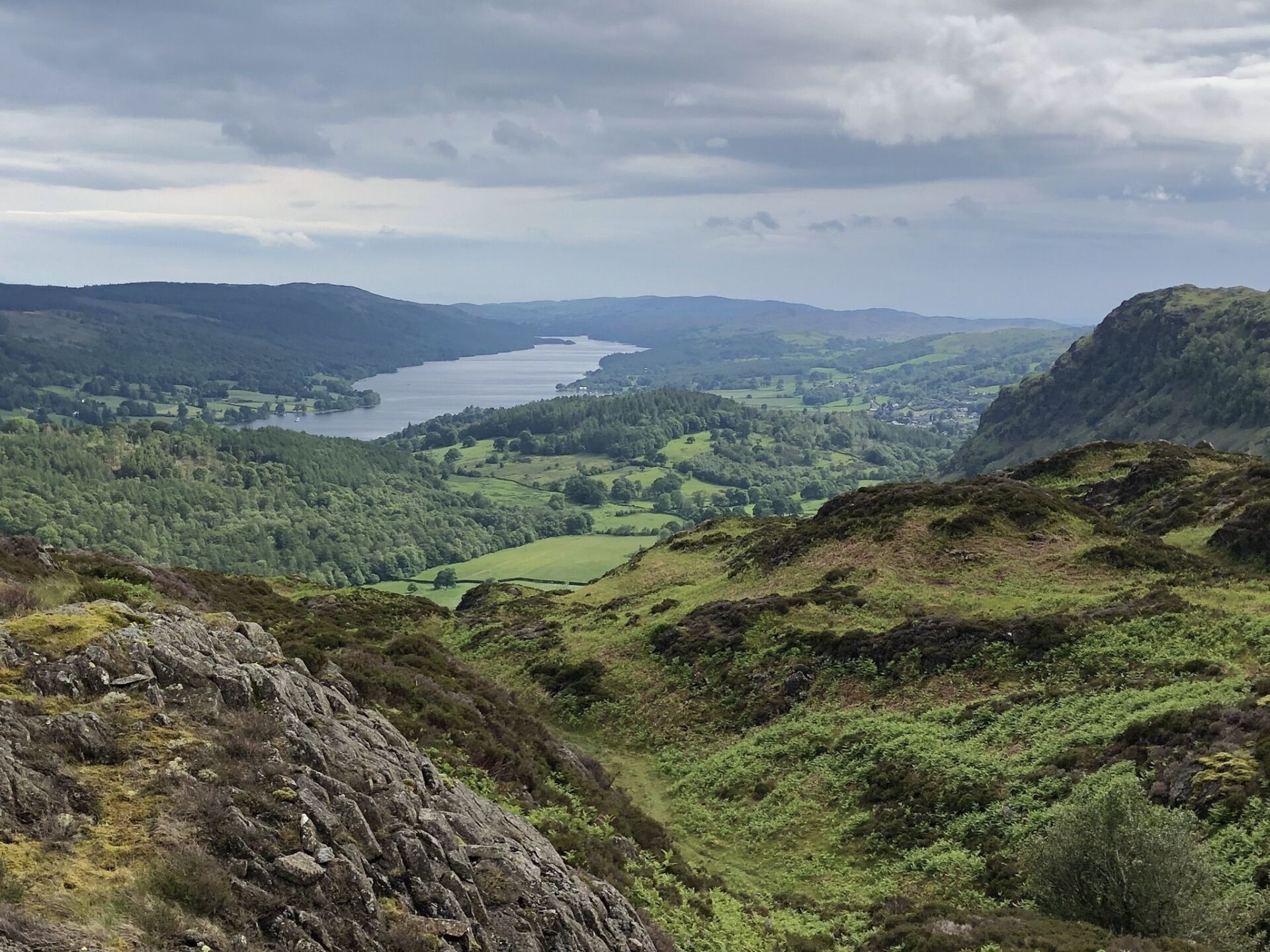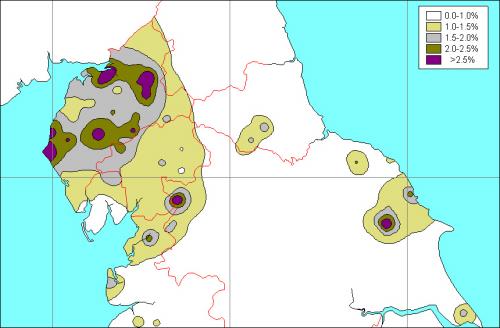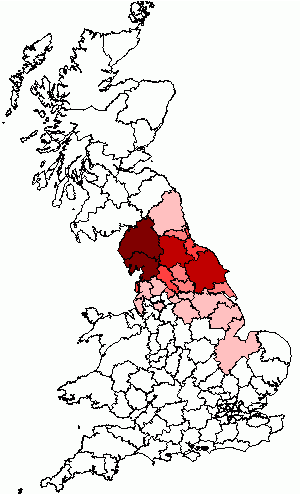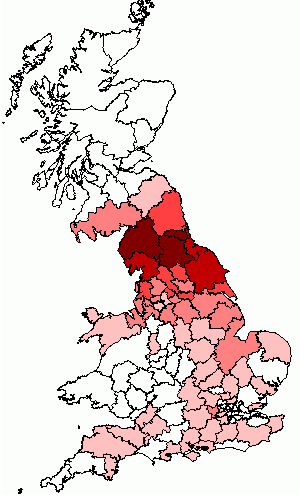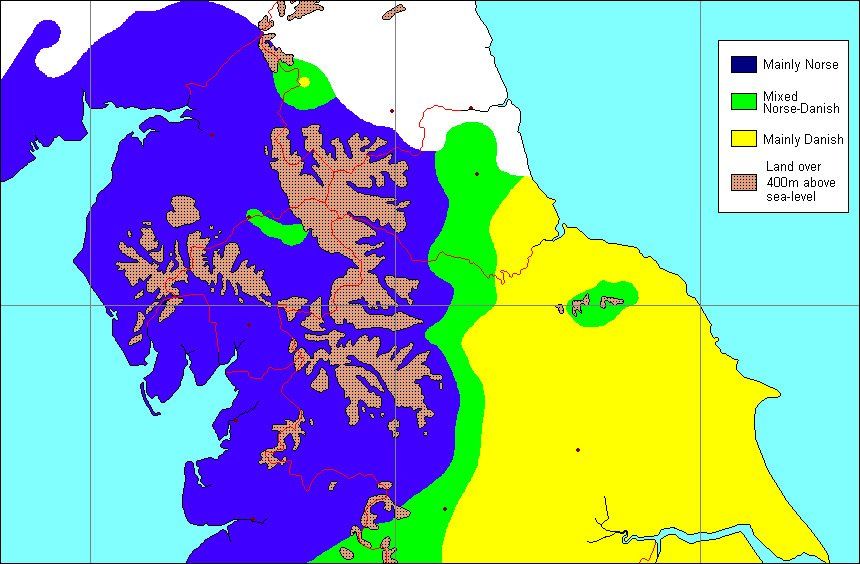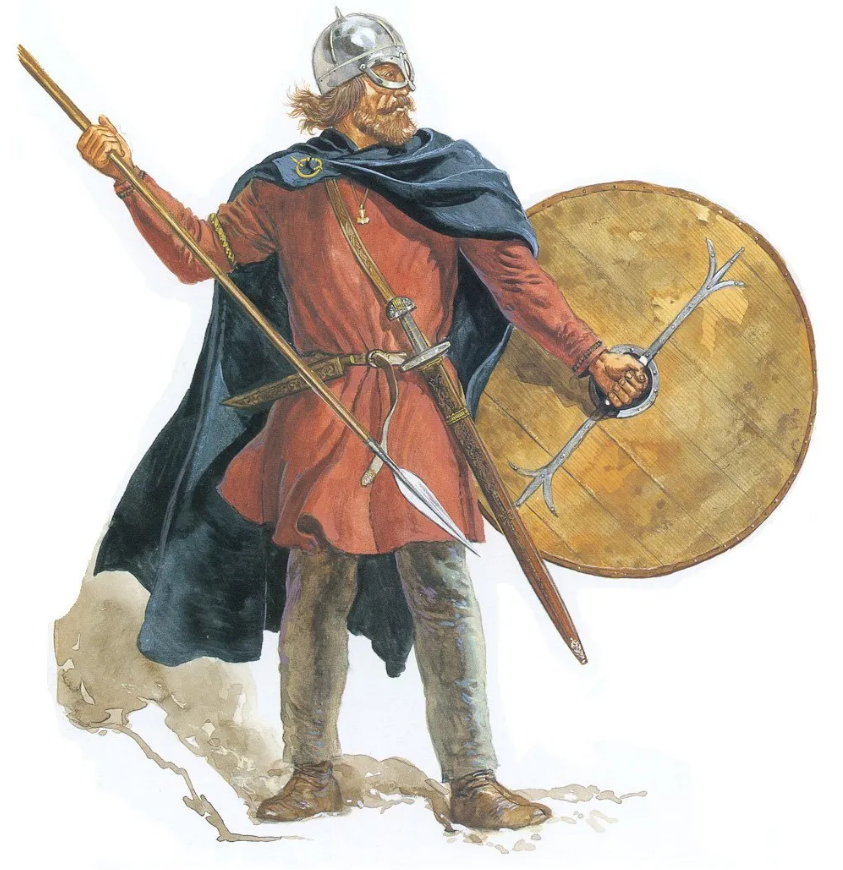There is a close correlation between the population density of the Hodgson surname and the pattern of Norse settlement in the eleventh century (Hodgson, 1993). Furthermore, recent DNA evidence confirms a relatively high percentage of Norse blood among male Hodgsons (Hodgson, 2005, 2008). This percentage of Norse blood among male Hodgsons is as high as in the Shetland and Orkney Islands, where the Norse are known to have settled in large numbers.
The evidence clearly suggests that the Hodgson surname has Norse roots. It is thus likely to derive from
Oddgeir-son or
Hrodgeir-son.
Oddgeir as a first name is still in use in Norway today.
The Scandinavians used occasional and temporary filial names many centuries before the establishment of permanent surnames along the male line. Hence, from the eleventh to the fourteenth centuries, names deriving from
Oddgeir, Oddr or
Oddi, such as
Oddgeirson,
Oddgson,
Oddson or
Odesun, were found among the Norse cultural remnants in the North of England. Names such as
Oddgson became locally familiar as second names, and as early as the tenth century.
Another possibility is that Hodgson derives from the Norse name
Hrodgeir, which is related to the name of the Old English king Hrodgar in the ancient tale of Beowulf. Here the leading ‘H’ in Hodgson is acquired directly from the Norse. But as far as I am aware there is no indication by etymologists of a possible derivation of Hodgson from
Hrodgeirson. It is nevertheless an attractive alternative hypothesis.
When surname transmission began in the fourteenth century, surviving second names such as Oddgeirson, Oddgson, Oddson, Hrodgeirson, Hodgeson or Hodgson would be passed more systematically from father to son in the modern manner, as family names. Subsequently the fixed surname would be passed on through the male line to all succeeding generations. Eventually
Oddson,
Oddgeirson or
Hodgeirson would have become transformed to Hodgson.
In areas such a Cumbria and Lonsdale, the Norse language survived for centuries after the Norse invasions (Bugge 1921). Forenames such as Oddgeir would have been much more common than Roger or Hodge. Most Hodgson families originate from Norse area. While we cannot rule out the possibility that some Hodgson surnames derive from Hodge, the majority derive from
Oddgeir,
Oddr,
Oddi or
Hrodgeir.
Baldwin, John R. and Whyte, Ian D. (eds) (1985) The Scandinavians in Cumbria (Edinburgh: The Scottish Society for Northern Studies).
Barber, Henry (1903) British Family Names: Their Origin and Meaning, second edition (London: Elliot Stock).
Bardsley, Charles W. (1901) A Dictionary of English and Welsh Surnames (London: Henry Frowde).
Bugge, Alexander (1921) ‘The Norse Settlements in the British Islands’, Transactions of the Royal Historical Society, 4th Series, Vol. 4, pp. 173-210.
Campbell, Ewan (2001), 'Were the Scots Irish?' Antiquity, June, Issue 288, pp. 285-292.
Campbell, Kevin D. (2007) ‘Geographic Patterns of Haplogroup R1b in the British Isles’, Journal of Genetic Genealogy, 3, pp. 1-13, www.jogg.info/31/campbell.htm .
Cunliffe, Barry (2001) Facing the Ocean: The Atlantic and Its Peoples 8000 BC - AD 1500 (Oxford: Oxford University Press).
Falkus, Malcolm and Gillingham, John (eds) (1981) Historical Atlas of Britain (London: Grisewood and Dempsey).
Ferguson, Robert (1858) English Surnames and their Place in the Teutonic Family (London: George Routledge).
Helgason, Agnar, Sigrún Sigurðardóttir, Jayne Nicholson, Bryan Sykes, Emmeline W. Hill, Daniel G. Bradley, Vidar
Bosnes, Jeffery R. Gulcher, Ryk Ward, and Kári Stefánsson (2000) ‘Estimating Scandinavian and Gaelic Ancestry in the Male Settlers of Iceland’, American Journal of Human Genetics, 67(3), September, pp. 697-717.
Hines, John (1984) The Scandinavian Character of Anglian England in the Pre-Viking Period, British Archaeological Report 124, Oxford, pp. 277-8.
Hodgson, Geoffrey M. (1993) The Hodgson Surname: Its Norse Origin and Cumbrian Location (Standon, Hertfordshire: Martlet Books).
Hodgson, Geoffrey M. (2005, 2008)
Hodgson Saga (Standon, Hertfordshire: Martlet Books).
MacLean, J. P. (1889) A History of the Clan MacLean: From its First Settlement at Duard Castle, in the Isle of Mull, to the Present Period (Cincinnati: Robert Clarke).
Moore, R. L. (ed.) (1981) The Hamlyn Historical Atlas (London: Hamlyn).
Oppenheimer, Stephen (2006) The Origins of the British (London: Robinson).
Parson, W. and White, W. (1829) History, Directory and Gazetteer of the Counties of Cumberland and Westmorland etc. (Leeds: White).Baldwin, John R. and Whyte, Ian D. (eds) (1985) The Scandinavians in Cumbria (Edinburgh: The Scottish Society for Northern Studies)
Reaney, P. H. (1958) A Dictionary of English Surnames, first edition (London: Routledge and Kegan Paul).
Simek, Rudolf (1993) Dictionary of Northern Mythology (D. S. Brewer, Cambridge).
Sykes, Bryan (2006) Blood of the Isles: Exploring the Genetic Roots of Our Tribal History (London: Bantam). Published in the USA as Saxons, Vikings, and Celts: The Genetic Roots of Britain and Ireland (New York: Norton).
Treharne, R. F. and Fullard, Harold (eds) (1963) Muir’s Historical Atlas: Ancient and Classical, sixth edition (London: George Philip).
Wainwright, F. T. (1975) Scandinavian England: Collected Papers, ed. H. P. R. Finberg (Chichester: Phillimore).
